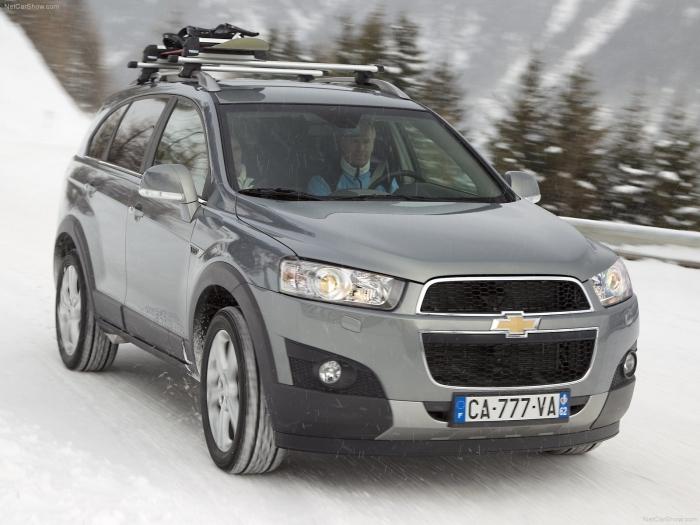In 2006, the lineup of cars of the General Motors family was replenished with another crossover called the Chevrolet Captiva. The debut of the first generation of SUVs took place in the same year as part of the annual auto show in Geneva. His restyled series appeared 4 years later at the Paris Motor Show.
An interesting fact: the word "Captiva" in translation from Italian means "captive".
Design
The appearance of the car is quite standard for a compact crossover. Despite its small dimensions and relatively low ground clearance, the Chevrolet Captiva turned out to be very courageous in appearance. In the front part there is a wide chrome strip of the radiator grille with the company logo, on the sides are rectangular headlights with rounded ends. Just below the main optics - fog lights integrated into the bumper . Rear-view mirrors received LED repeaters of direction indicators, on a sloping roof harmoniously placed roof rails. The embossed hood successfully emphasizes the transition of the grille line to the body pillars. In general, the appearance turned out to be quite successful, however, if you compare it with the Russian-American development of the Chevrolet Niva, you can see familiar related features.

Photo of the new Chevrolet Captiva, of course, is impressive. One cannot ignore such a car. The body of the Chevrolet Captiva almost did not change in size, but it was radically redesigned externally. After restyling in 2010, the bumper, front optics and radiator grille changed significantly . The air intake has become more pronounced against the background of other details, which made the new product not only aggressive, but even somewhat sporty. Restyling did not touch other elements.
Technical characteristics of the Chevrolet Captiva before restyling
The engine range of the pre-styling version included 3 power plants, among which there was one turbodiesel. The latter, with its volume of 2 liters, produced up to 150 horsepower. Gasoline units had a volume of 2.4 and 3.2 liters, while developing a capacity of 136 and 230 horsepower, respectively.
Technical characteristics of the Chevrolet Captiva after restyling
In 2010, the engine range was significantly modernized. The main emphasis was placed on environmental friendliness, since all power plants after restyling met the Euro-5 environmental standard. In total, the manufacturer prepared 4 new engines with a capacity of 167 to 258 horsepower and a displacement of 2.4 to 3.0 liters to enter the world market. It is worth noting that the dynamics of the car with the "top" 258-horsepower 6-cylinder engine was simply excellent. The technical characteristics of the Chevrolet Captiva made it possible to disperse the 1.77-ton SUV to hundreds in just 8.6 seconds. At the same time, fuel consumption ranged from 6.4 to 10.7 liters in the combined cycle (depending on the engine). As a transmission, the buyer could choose a 6-speed “automatic” or “mechanics” at the same speeds.
As we can see, the technical characteristics of the Chevrolet Captiva are simply excellent, and the power does not affect the economy to the worst extent. For this, American engineers deserve special praise.